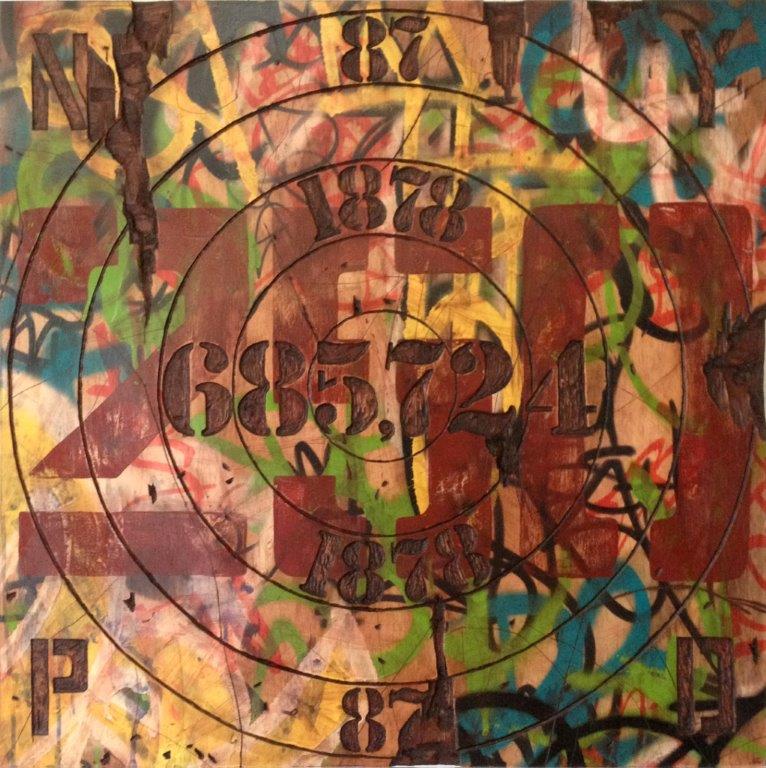Statement
 Scientists say that every time we recall a memory we are in fact re-creating that memory—altering it, making the memory more self-centered—while history, by some definitions, is the effort to establish a “true memory.” So can a true history exist if no true memory can be made?
Scientists say that every time we recall a memory we are in fact re-creating that memory—altering it, making the memory more self-centered—while history, by some definitions, is the effort to establish a “true memory.” So can a true history exist if no true memory can be made?
This question provides the basis of my aesthetic and use of invented narratives to create fictional artifacts. The narratives I create play a “Question and Answer” role in my process and dictate the markings made. For example, I may ask myself, “Why is the paint peeling off? Was this gouge from an axe or a rock?” The answer, “This object was abandoned in an area that over time became the hangout for groups of teenagers. They harass the paint, throw bottles and rocks at it, marring the surface.” This “Question and Answer” role of narrative guides my aesthetic choices; I weather, distress and‚ “age” the objects as it coincides with the developing narrative. In the context of the gallery, this aesthetic is intended to make the viewer think “antique,” and speculate as to how the object was used, its history and value. However, it is not important that my narrative comes across to the viewer nor am I interested in fooling the viewer into thinking these objects are originals. I simply want to construct objects that viewers imagine as having a history—a history that never existed—while in the context of the gallery.
The foundation of the work is to challenge and draw parallels between historical and contemporary cultural issues. My primary focus surrounds blacks in America and the African Diaspora. I examine the psyche of young black males feeling like a target and being targeted. I question tradition or the lack of tradition and the role it plays on ones values today. Objects that are antiques or antiqued are associated with historical relevance and wealth. By placing these issues in an antiqued object I am establishing the value in furthering a discussion around a particular issue. Analyzing historic and present social and economic disparities are what shape my conceptual process.
Consideration of materials occurs as I invent the object’s life and history. The materials are selected as a means to tell the story and chosen for their accessibility and workability. New materials, such as plywood, clue the viewer in to the modernity of the work and that they are on stage. These material clues support a fictitious narrative prompting the viewer to work through their own invented narrative.
artwork: New York, New York (The Stop & Frisk Gameboard), 24” x 24”, oil paint, acrylic, spray paint, plywood, 2013